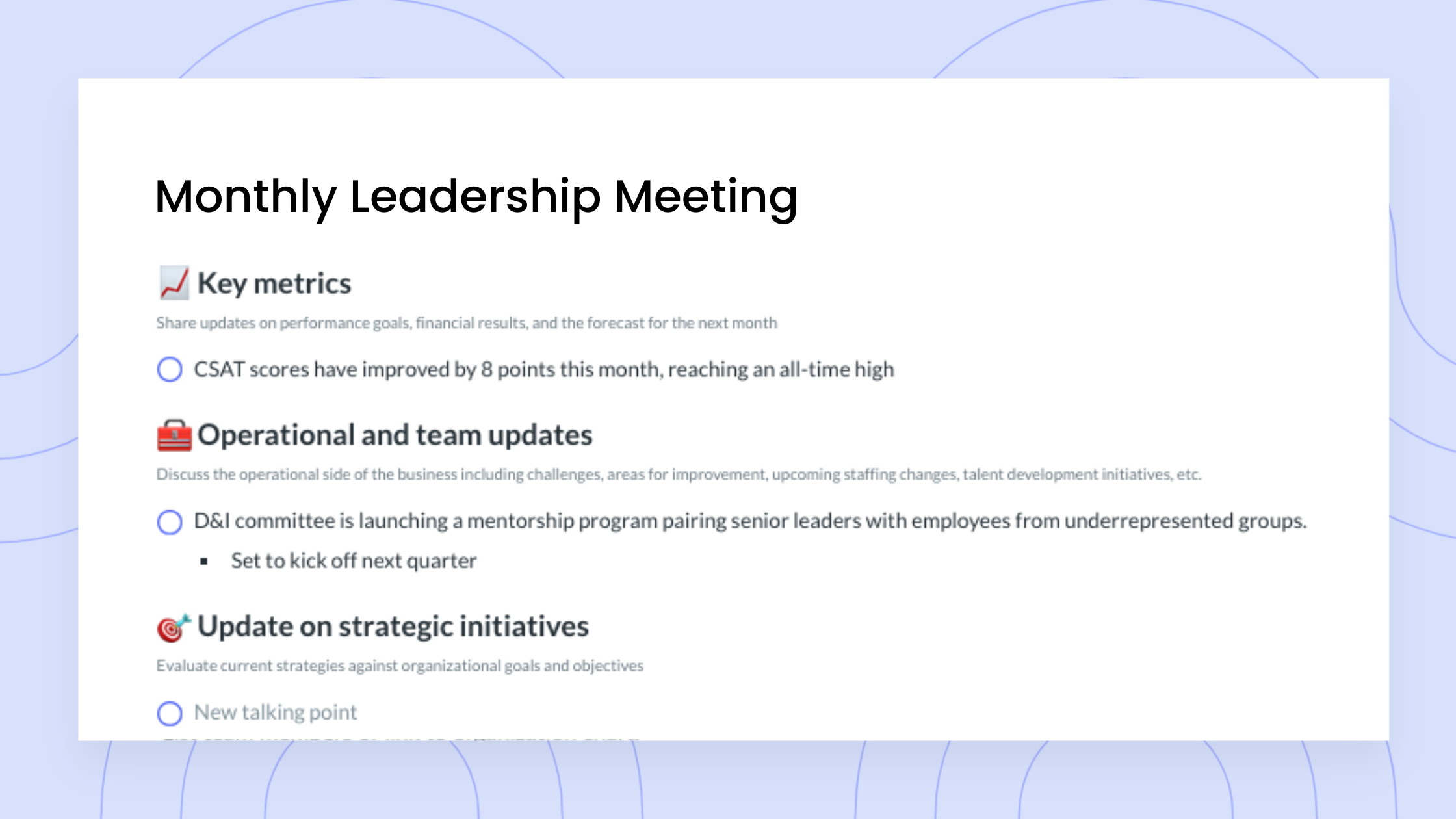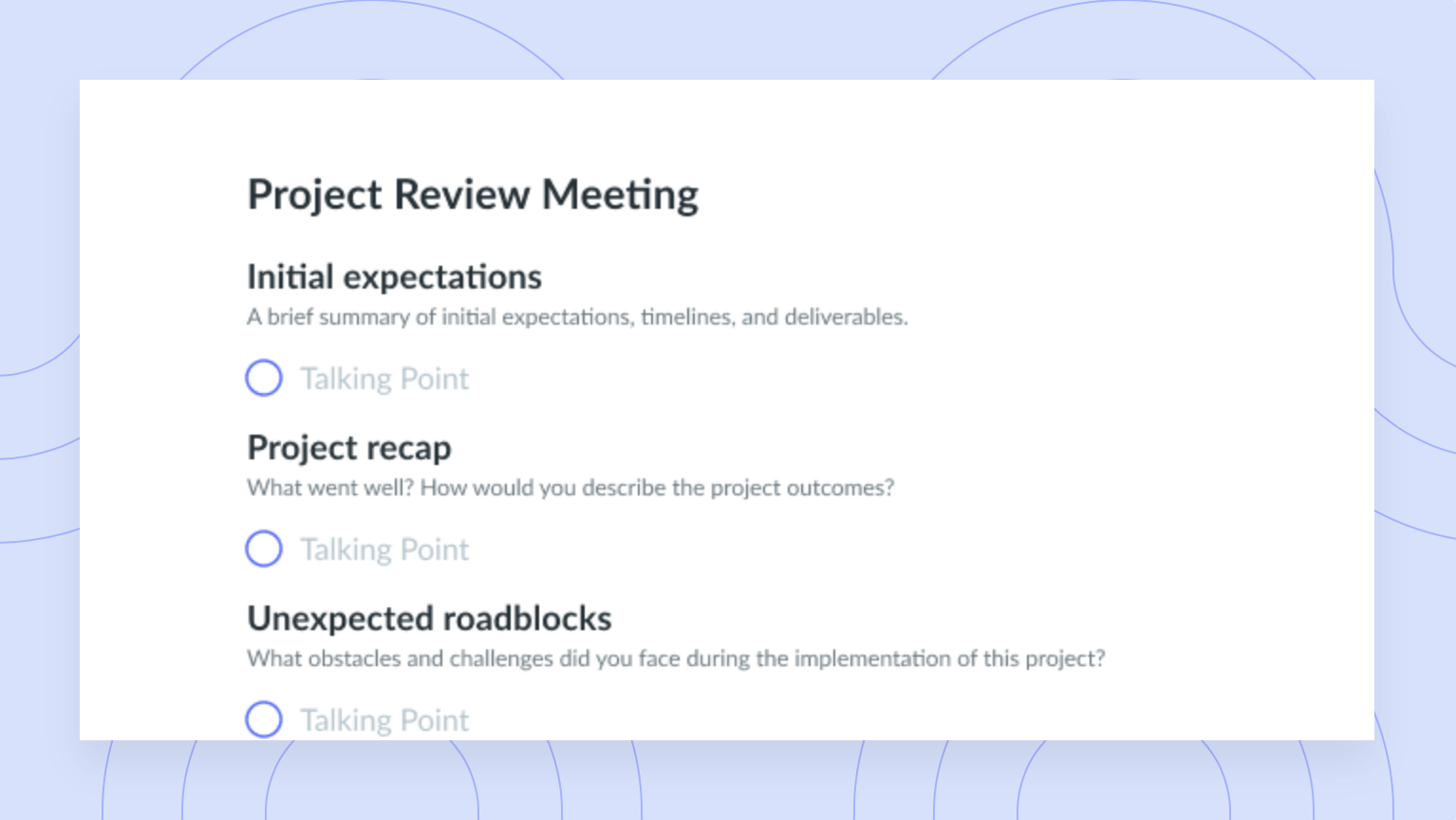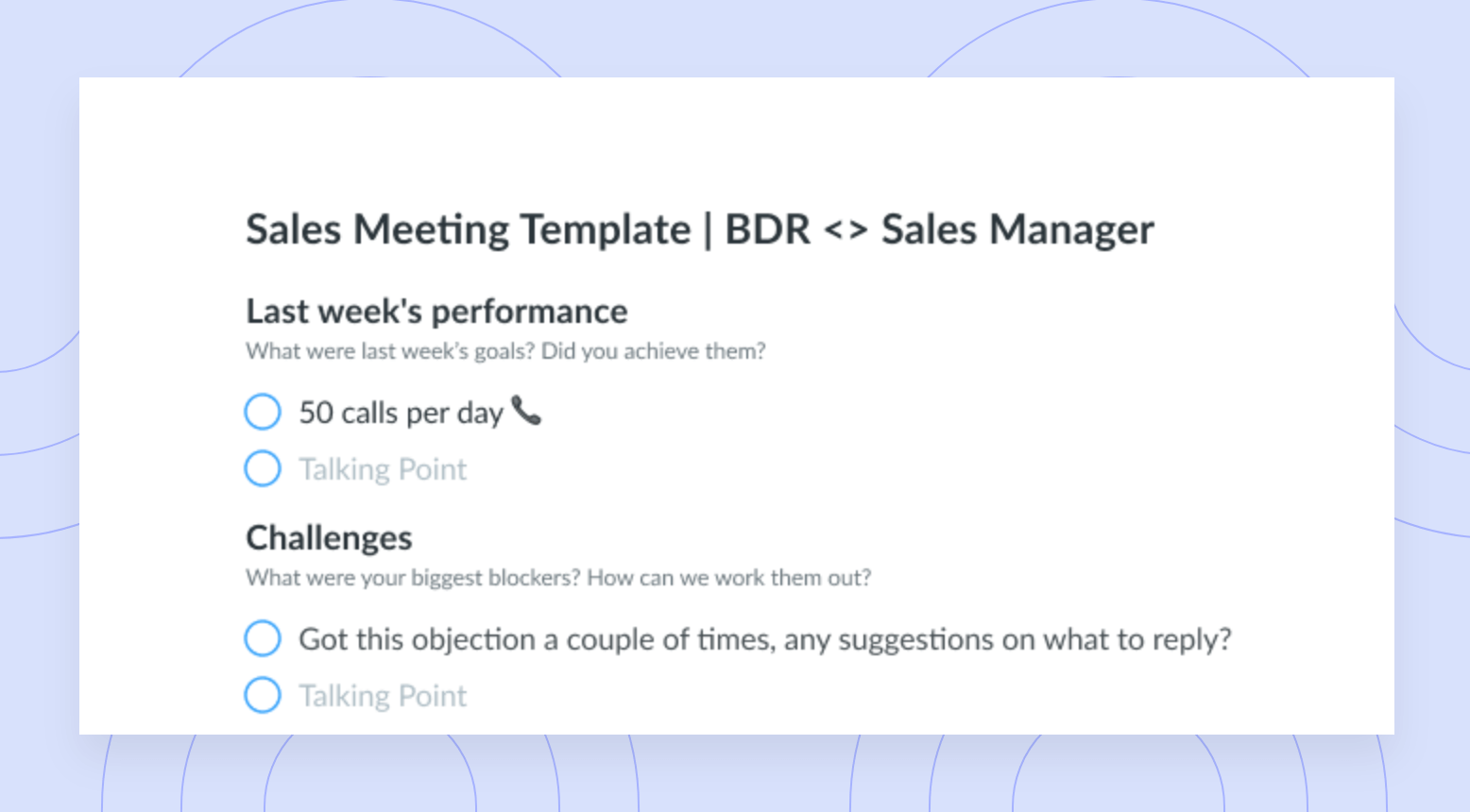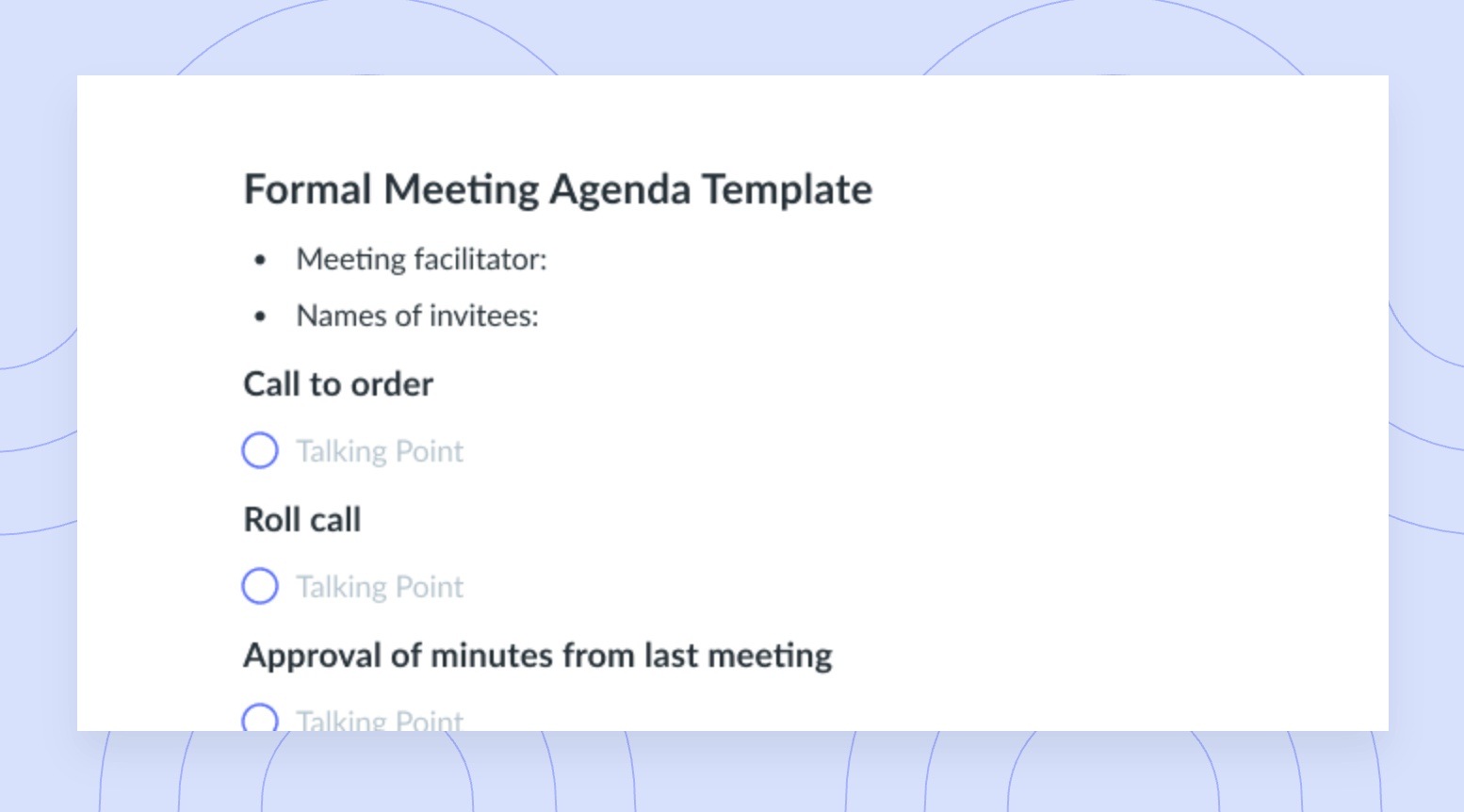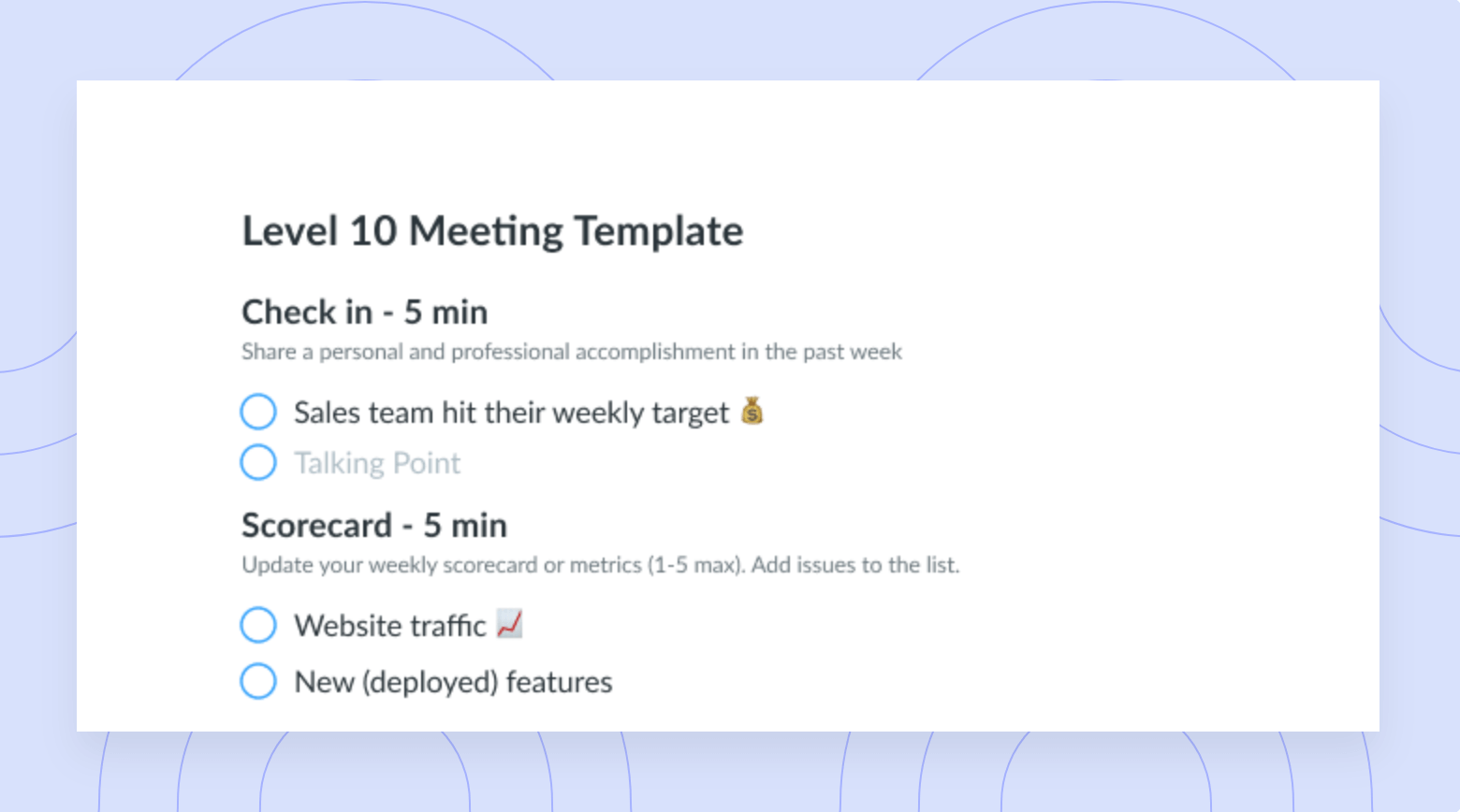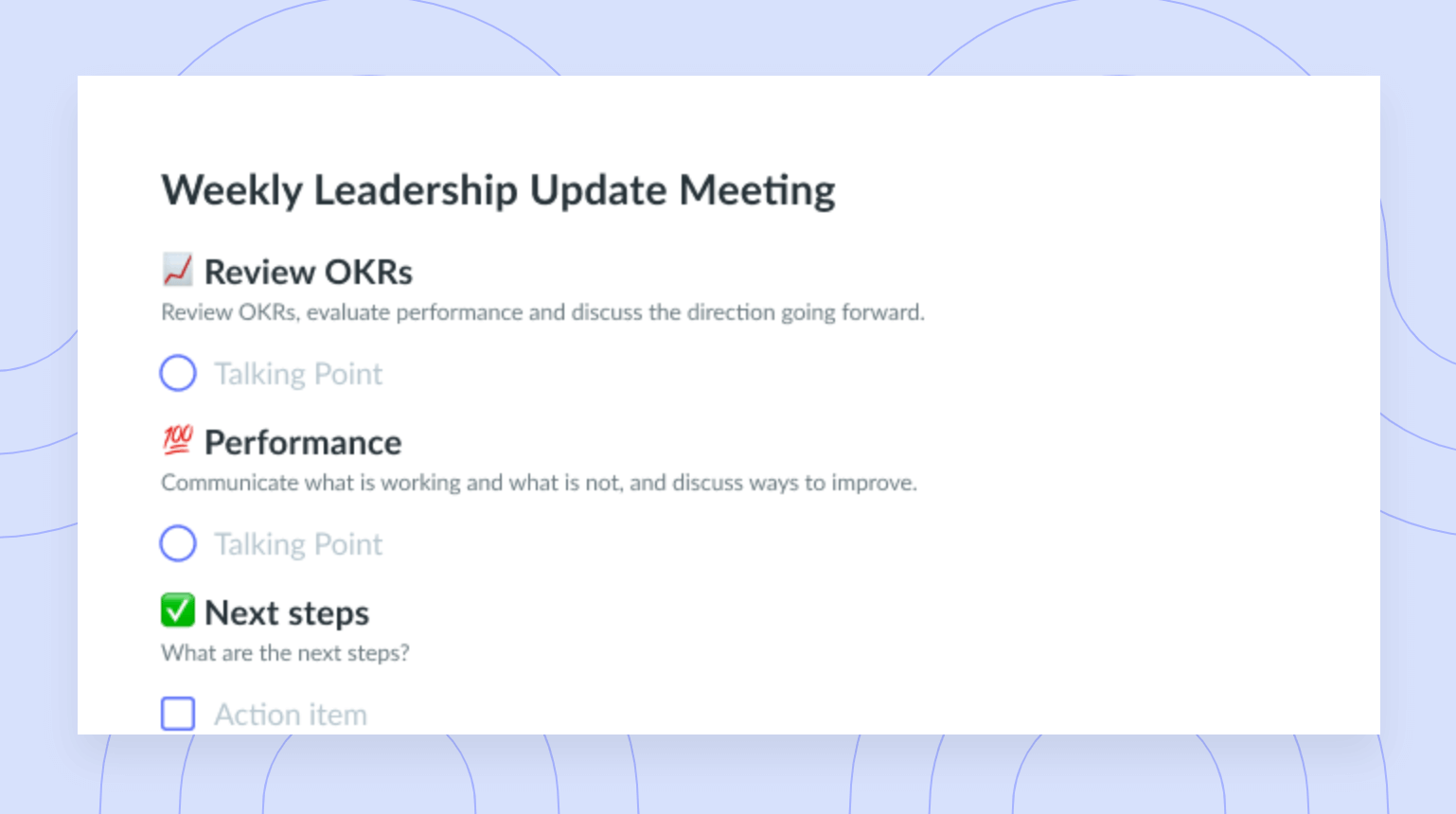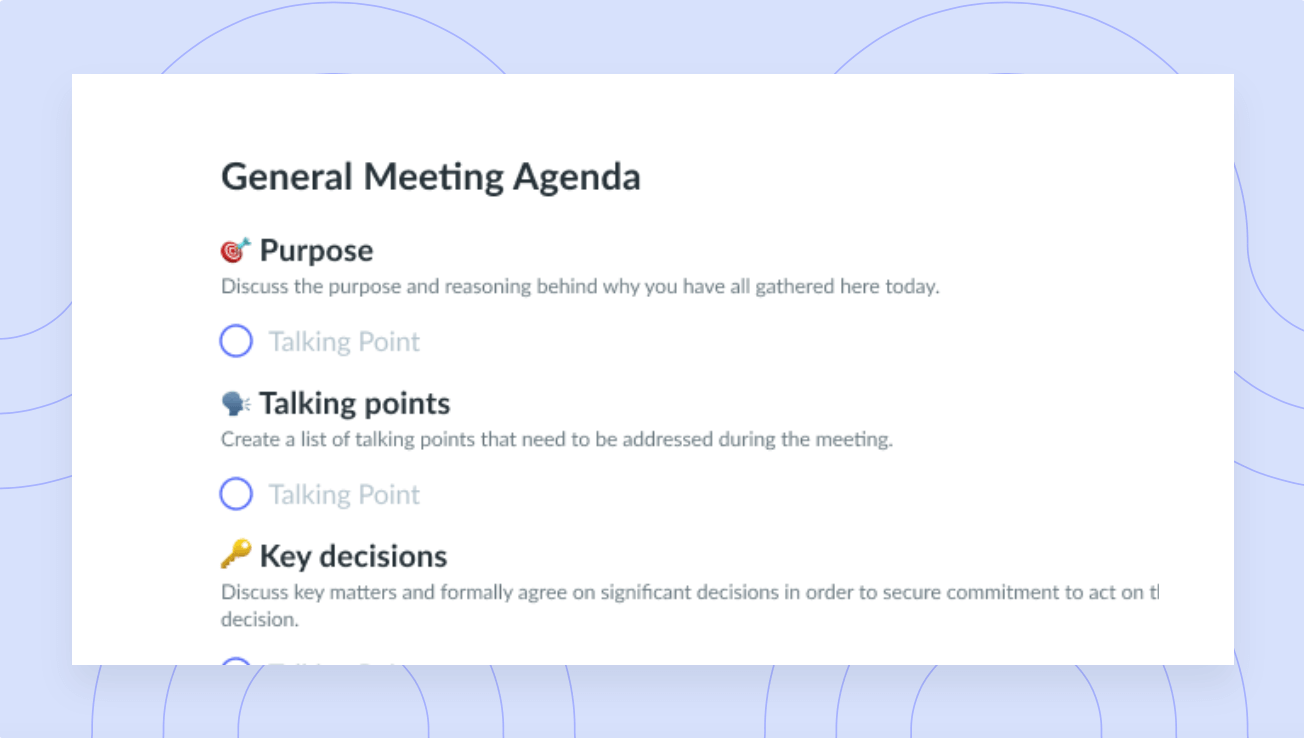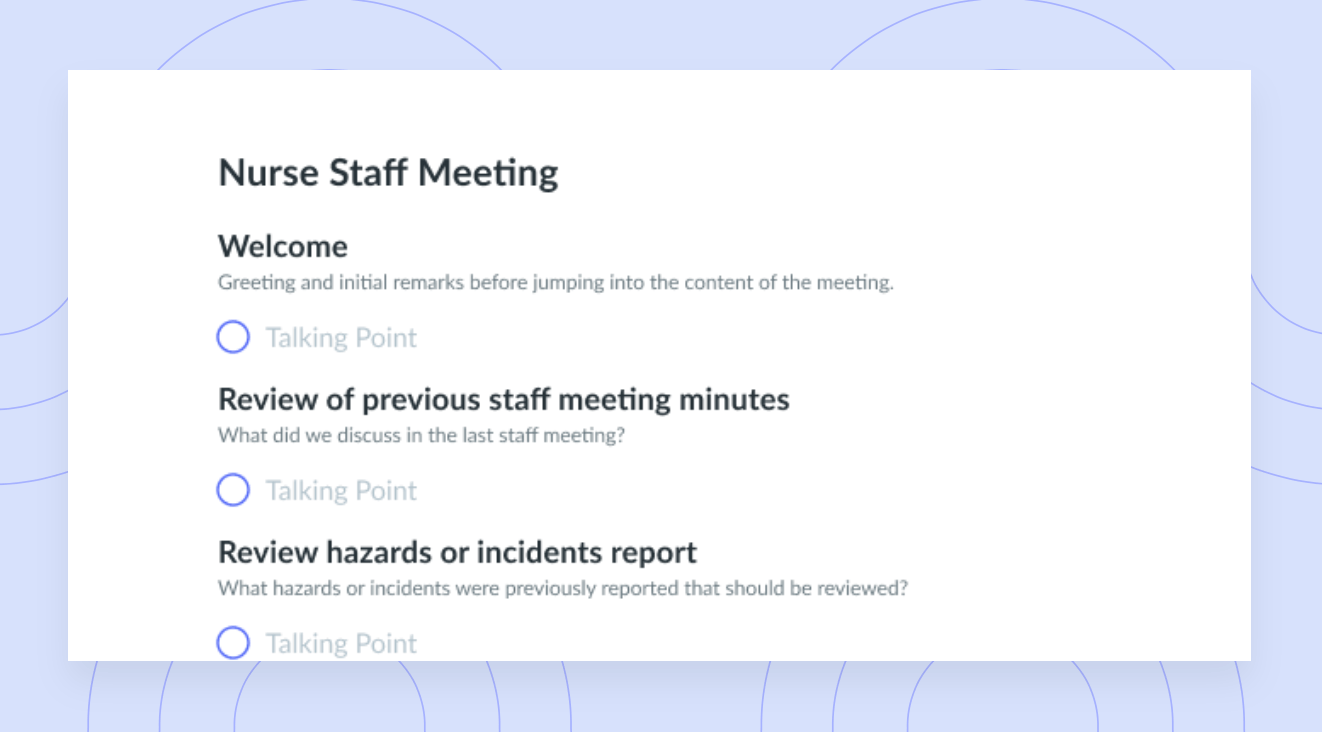11 Tips for Productive Virtual One-On-Ones [+ Free Template]
Learn to beat Zoom fatigue and make the most of your upcoming virtual one-on-ones with our tips and free templates.
Checking in with your teammates is often pushed to the bottom of the priority list when other work begins to pile up. We don’t blame you. In a world that is ridden with Zoom fatigue and prioritizes asynchronous communication over face-to-face conversations, it can be tempting to push that one-on-one back or cancel it altogether.
Let’s talk about virtual one-on-one meetings, how to host a productive one, and how meeting regularly with each of your employees can improve company culture.
- The purpose of virtual one-on-ones
- 11 tips for holding productive virtual one-on-ones
- Free one-on-one meeting agenda templates
The purpose of virtual one-on-ones
What if we told you that remote one-on-one meetings should be at the top of your priority list? Or that you should aim to make these meetings as productive and engaging as possible? When you stop communicating regularly with your direct reports, they’ll begin to feel disconnected. This is especially true if you’re leading a team of remote workers. To support a team properly, it’s critical that managers have dedicated time to chat with each employee. There is a human benefit to talking regularly and maintaining a personal connection. Regular one-on-one meetings help prioritize ongoing communication, lead to better employee performance and higher job satisfaction, and create a more collaborative environment.

Virtual one-on-ones worth showing up to
Level up your virtual one-on-one meeting habits to boost engagement and productivity with a collaborative meeting agenda that both attendees can contribute to. Try a tool like Fellow!
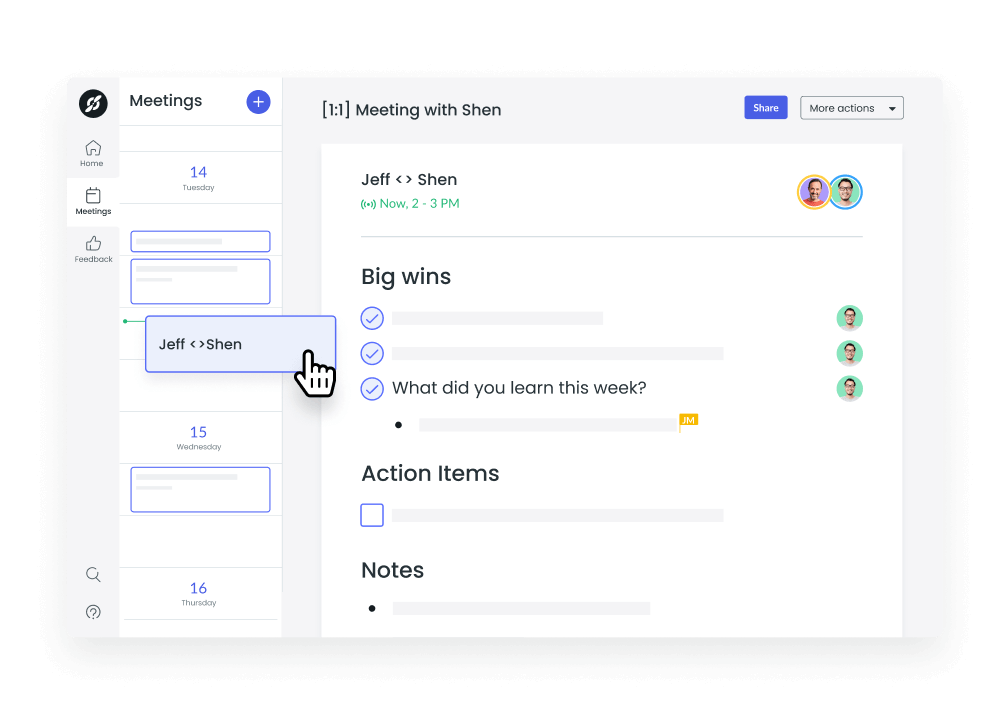
11 tips for holding productive virtual one-on-ones
- Use a one-on-one meeting agenda template
- Send an agenda 24 hours before the meeting
- Use meeting management software
- Begin with a personal check-in
- Be mindful of body language
- Schedule the meeting to be recurring
- Look at the camera when you’re speaking
- Give and receive feedback
- Take meeting notes
- Join meetings with a neutral background
- Take your meeting in a quiet environment
1Use a one-on-one meeting agenda template
Set expectations and foster a positive work relationship with each employee by using a one-on-one meeting agenda template. During your first meeting with a new employee, establish a relationship by selecting a template that is more informal and allows you to get to know the person. If the one-on-one meeting is with an individual whom you’ve managed for a while, use the time to catch up and discuss work priorities. Select a template from Fellow’s catalog that will prompt meaningful discussions about objectives. Encourage your attendee to add items they’d like to discuss to the agenda as well.
2Send an agenda 24 hours before the meeting
During the time between your one-on-ones with a direct report, take note of what topics you’d like to bring up at your next meeting. Jot these ideas down in your meeting agenda so each meeting has a clear purpose and the conversation is organized before it happens. Send the agenda at least 24 hours in advance of the meeting so the attendee can add their own notes, talking points, or topics for discussion. Save the agenda as a recurring template for future one-on-ones so you can edit and update it as needed.
3Use meeting management software
Did you know that using a content management tool drives engagement and productivity before, during, and after every meeting? Level up your one-on-one habits by building collaborative meeting agendas, recording decisions, and keeping your direct reports accountable in Fellow. During the meeting, you can take notes, jot down thoughts, track real-time feedback, and organize all upcoming priorities. You’ll be doing yourself and your team a favour by keeping your team’s agendas and action items in one space you can refer to at any time!
4Begin with a personal check-in
Schedule some time in your meeting agenda to give personal updates or complete a quick ice breaker during each one-on-one. The most effective employees are the ones who feel valued. If your direct report has some exciting personal news or a quick story to share, listen actively and participate in the conversation. Checking in with each employee on a regular basis will help you foster a better relationship with each member of your team and help the rest of the one-on-one flow.
5Be mindful of body language
They say that body language can be more powerful than words. When meeting virtually, it can be especially difficult to pick up on nonverbal cues. Make sure that your body language reflects your attitude throughout the one-on-one. Strive to maintain a relaxed composure and good posture. Your body language should be open to indicate enthusiasm and warmth. Smile and nod often while your colleague speaks. Notice your breathing if you’re nervous about sharing constructive feedback or relaying other important news during the call, and adjust it accordingly.
6Schedule the meeting to be recurring
Keep a consistent meeting schedule. Your one-on-one meetings shouldn’t come as a surprise to your direct reports. How often you connect with the members of your team will depend on how frequently you interact, but you should aim to meet with each employee at least once per month. Host regular one-on-ones more frequently if the individual works remotely. All members of your team should know when they’re meeting and have adequate time to prepare for the call in advance. You can even schedule all of your one-on-one meetings on the same day if it will help you maintain a powerful workflow.
With Fellow, you can also set a recurring template by selecting “Set as default template” on recurring meetings. This will apply the same template to all future meetings.
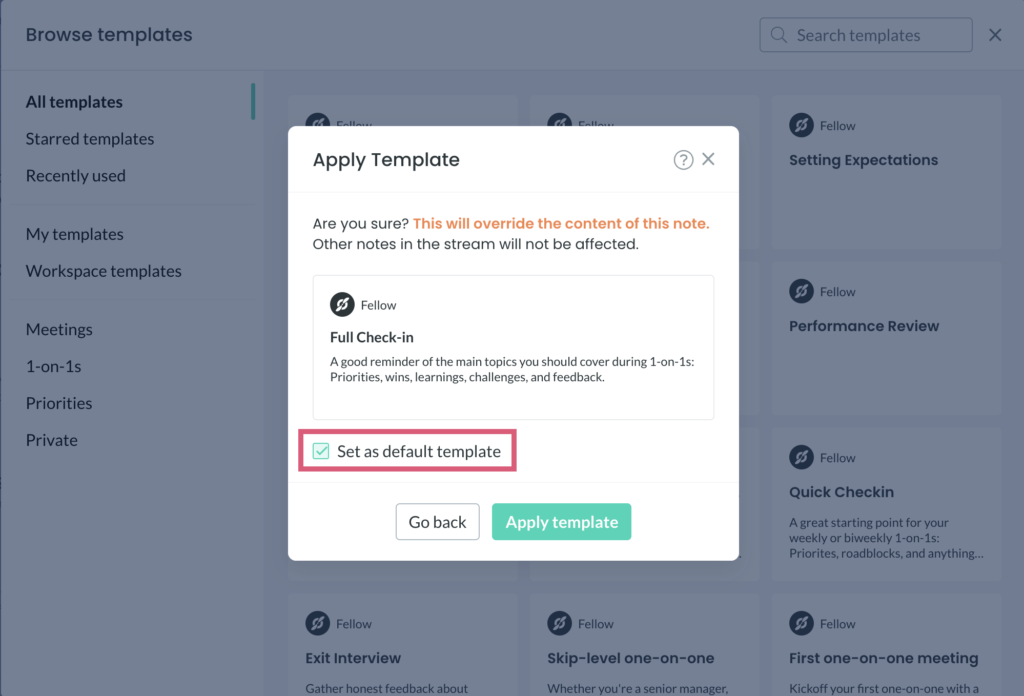
7Look at the camera when you’re speaking
It’s hard to remember to look at the camera when you’re meeting remotely. Try not to get too caught up in how you look and aim to focus all of your attention on the conversation at hand. Use app features that will keep your virtual meeting distraction-free. For example, you can hide the self-view on Zoom without turning off your camera. Close all other browsers and applications during the meeting as well. You should be listening to and communicating with your employee at this time, not sending Slack messages to your manager or ordering your lunch. If you must look away from the screen to find a digital document on your computer or phone, notify the employee that you’re still listening.
8Give and receive feedback
A healthy work culture begins with feedback. Normalize giving both positive and constructive feedback during your virtual one-on-ones. By letting each employee know what they’re doing well or how they can improve at each meeting, you’ll be able to keep track of each individual’s growth over a period of time. As a manager, you should also ask for feedback. Ask your employees questions like: “how can I make your job easier?” and “is there anything I can help with to make you feel more supported in your role?”. Strive to grow alongside your employees and track your progress towards achieving goals together.

9Take meeting notes
Your meeting notes should outline any key information discussed during your one-on-ones so you can review important details in the future. Not every part of the conversation will be useful at a later time, so you don’t have to write everything down verbatim. Your notes should include the date and time of the meeting, topics discussed, key decisions made, feedback given, and action items to be completed before the next meeting. Fellow’s app for Zoom can even bring your notes into a convenient panel in your virtual one-on-ones so you won’t need multiple apps open at once.
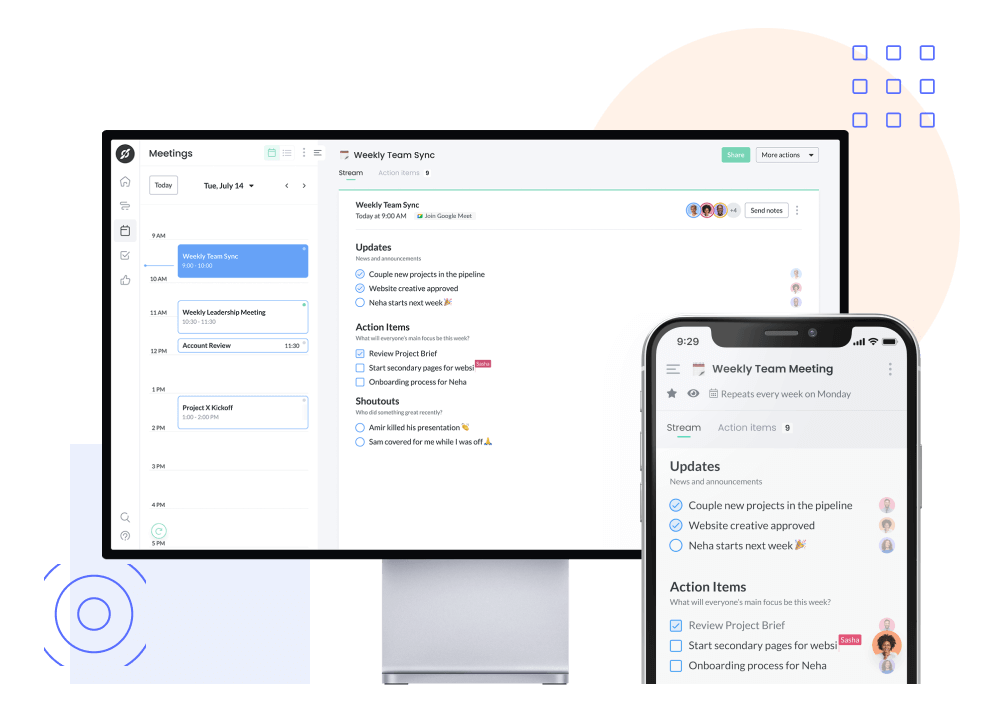
10Join meetings with a neutral background
Everyone has worked with a colleague who has a distracting Zoom background. While it may not be feasible to rid your meeting background of all chaos when you’re working from home, you should aim to keep it as simple as possible. For example, it will be harder to focus on the conversation if your dog is barking below your desk throughout the meeting. If there is a mess in the background of your space, use the blurring feature on Zoom or a branded screen that will keep your direct report focused on the conversation instead of what’s behind you. Also, natural light is by far the best choice for virtual calls, but you could consider purchasing studio lighting if natural light isn’t an option and your budget allows.
11Take your meeting in a quiet environment
Avoid your favourite coffee shop and head to your quiet home office. While you may enjoy some subtle background noise during the workday, it’s not fair to your employees if they’re having to hear someone else’s conversation while they’re reviewing their work priorities with you. Your virtual meetings should always take place in an environment with minimal distractions. By conducting each one-on-one meeting in a quiet space, you’ll ensure that you can actively listen and participate in the conversation. Additionally, having your virtual one-on-one in a quiet space will show your direct report that you’re willing to give them your undivided attention because you care about what they have to say.
Free one-on-one meeting agenda templates
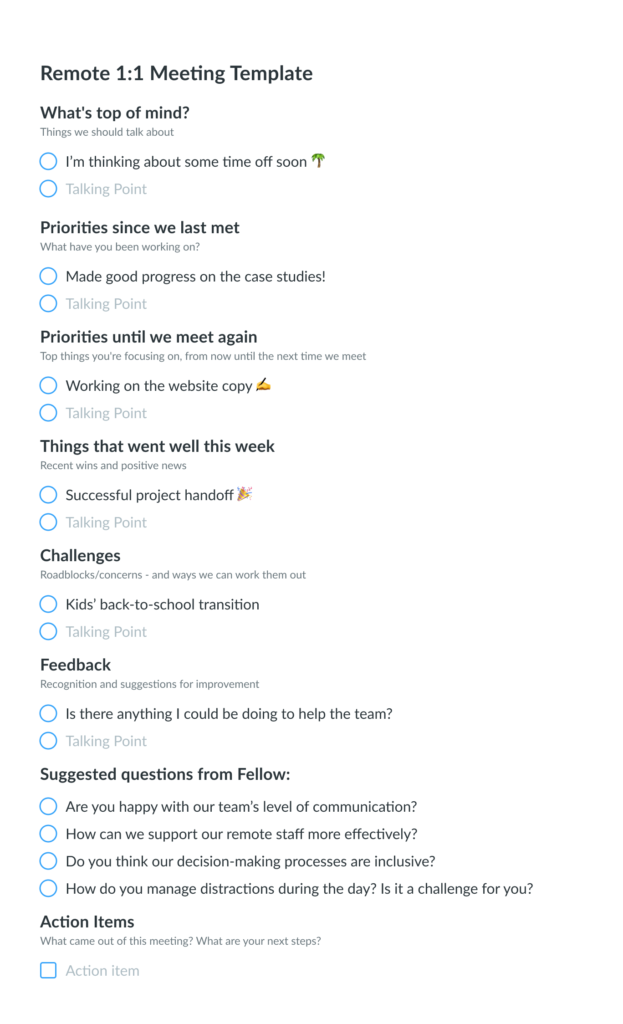
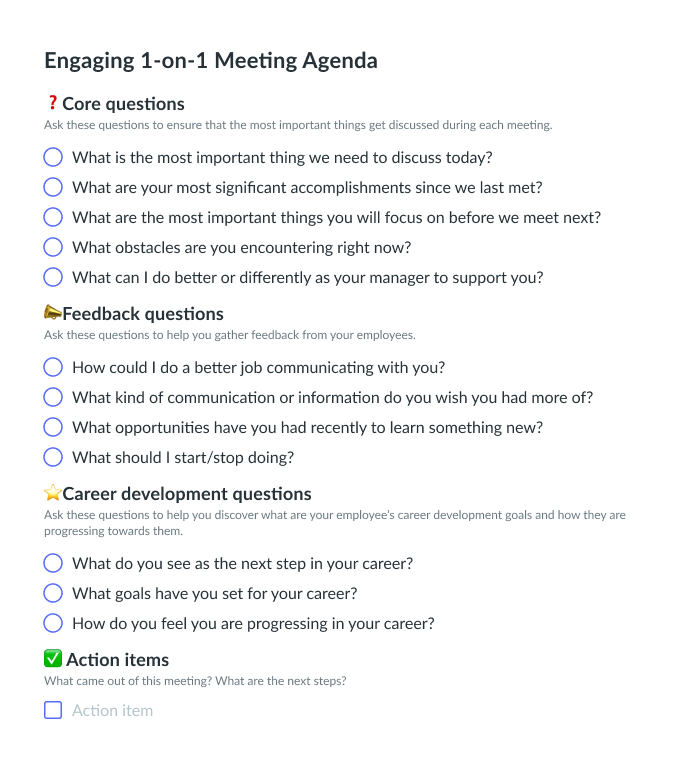
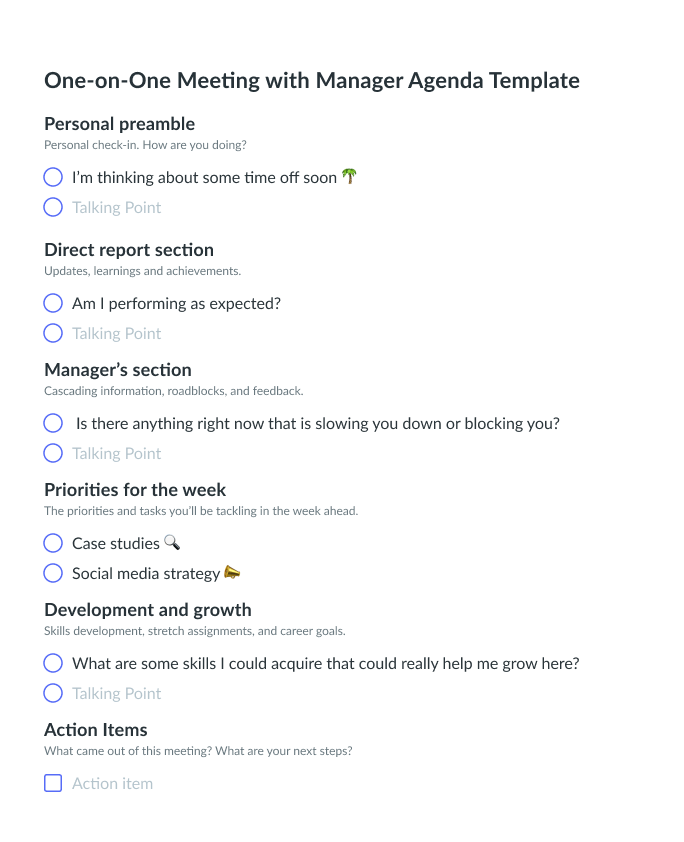
Parting advice
We get it. It can be challenging to maintain consistent communication with your team when working remotely. Virtual one-on-one meetings are the perfect opportunity to connect with your employees on a more personal level outside of the production process. Remember that no matter how busy you are, one-on-ones are not optional! Make time for each of your direct reports and let them know how much you value their insights and hard work today.









